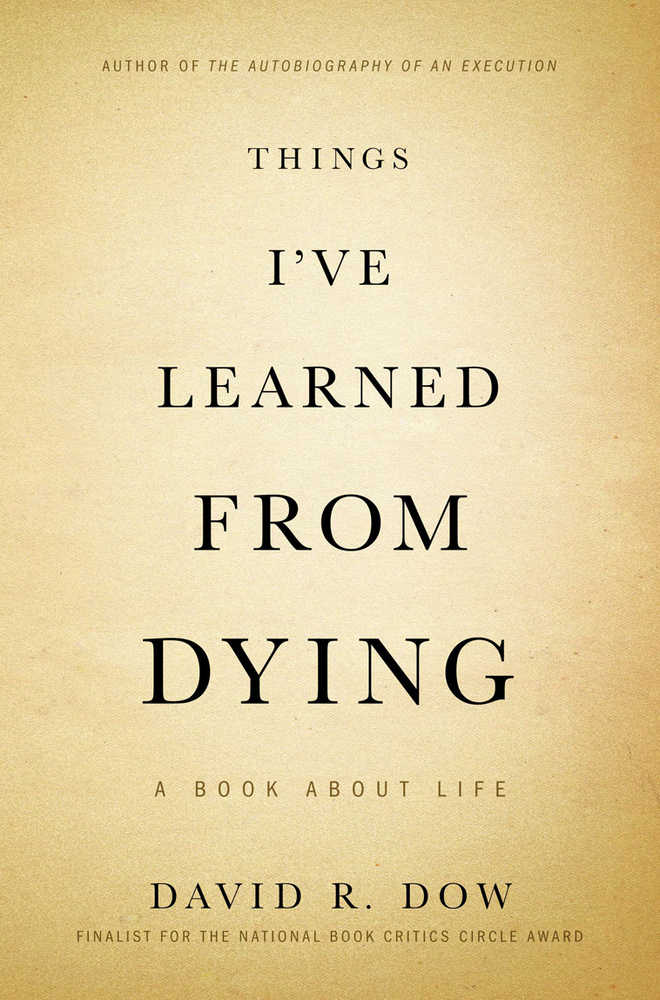Just one more bedtime story.
You wanted that as a child because you’ve always been someone who hates endings (one more for the road). Everyone knows you never get out the door on time (let me just look again). Coat on, hat on, and you start another story (did I tell you …?).
“Goodbye” sounds so final and it’s not a bad thing that you can’t take your leave. But, as in the new book “Things I’ve Learned from Dying” by David R. Dow (c.2014, Twelve, $25, 273 pages), sometimes, it’s time to go.
The crime was horrifying for its brutality: four teenagers broke into the home of an 84-year-old woman, slinked upstairs to where she was watching TV in bed, took her car keys, and killed her. Later, Texas law allowed Eddie Waterman, who did not shoot the fatal bullet, to be sentenced to die for the crime.
In Huntsville , where “inmates spend twenty-three hours a day in a sixty-square-foot cell with … a slit of translucent plastic for a window” David Dow met Waterman, his new client. Dow, a lawyer for Death Row inmates, had been down this road before. At their first meeting, he “did the math” and figured Waterman would “be dead in twenty-eight months.” Still, he would try to overturn the sentence.
Dow’s father-in-law, Peter, asked why Dow wanted to save Waterman’s life. It was a good question from a man who was dying himself: Peter had metastatic melanoma.
But as hard as Dow fought to save the life of Waterman, who had nothing and wanted to live, Peter, who had everything to live for, wanted to die. Every possible legal chance was used to help Waterman’s plight; Dow and his team even put themselves in danger of disbarment. Meanwhile, Dow’s wife, Katya, desperately searched for viable alternative treatments for her father, who’d decided there’d be no more chemotherapy.
“I know you know how to let go,” Peter wrote to Dow. “I need you to teach it to Katya.”
In a file stored somewhere in my computer, there’s a flexible list of my Top Five Books Ever. “Things I’ve Learned from Dying” is there.
As a meditation on life, author David R. Dow first takes his readers on a dual path of sorrow (“My entire life consists of trying to put off the end.”). The situations, together, drip with irony; his good memories of Peter seem grief-flat, dry, and joyless. It’s hardly believable, then, that Dow’s dog falls ill during this time, which feels to readers like another kick to the stomach.
That’s overwhelming — obviously for the author as much as it is for us — but it’s also so affecting that you’ll find your hand creeping over your mouth as you read. You may even cry. But you won’t avoid being moved.
This memoir on life and death is a must-read for both sides of the capital punishment fence. It’s a must-read for anyone who’s lost a loved one. Start “Things I’ve Learned from Dying,” and I don’t think you’ll be able to leave it.
The Bookworm is Terri Schlichenmeyer. Email her at bookwormsez@yahoo.com.

